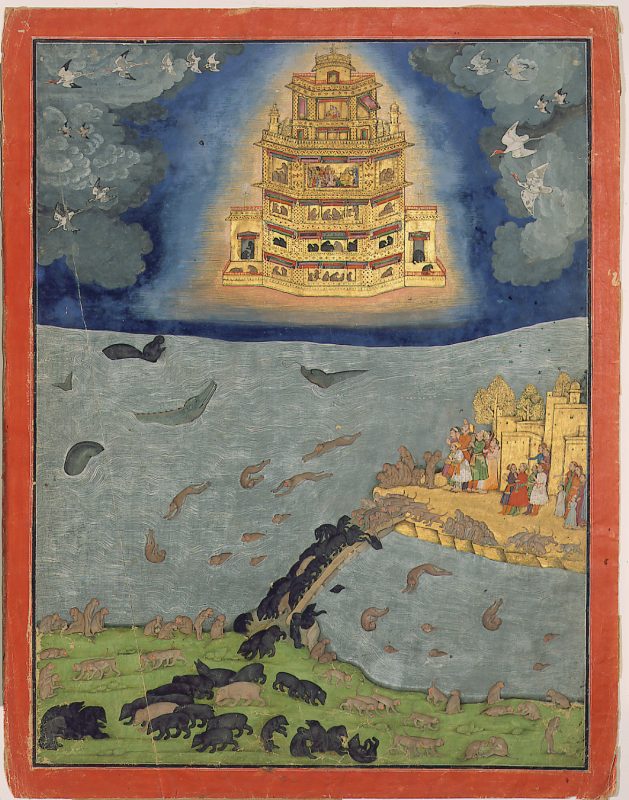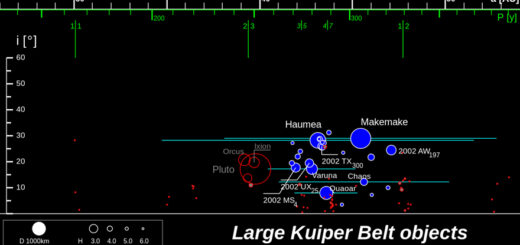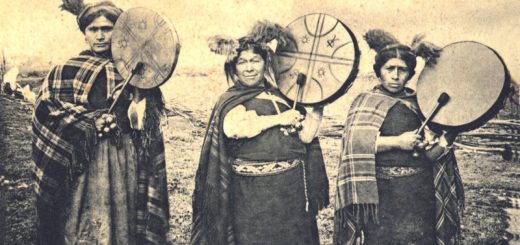The VYMANIKA-SHASTRA, intriguing and controversial
Vimanas, or ancient Indian flying machines, were they real or just mythology, pre-deluvian technology or occult phenomena? One unique, and controversial manuscript, the Vymanika Shastra raises this question again…

Rama’s Journey (ca. 1650). This painting celebrates the joyful reunion of Rama with Sita and their return home after the long exile of fourteen years. The gold celestial chariot able to move with the speed of mind, was summoned to Rama’s presence, and the reunited royal couple sits in the highest chamber.
Many years ago Sir Edward Bulwer Lytton wrote the novel Vril – the power of the coming race. During the Nazi-era the Germans wanted to become independent of oil import and out of the box scientist got governmental support to search for new sustainable sources of energy. During the war, they build their VRIL-Rundflugscheiben and Haunebus, flying saucers, who could perform as no conventional aircraft had ever done. Among them changing course with angles of 90 degrees. In between Bulwer Lytton and the VRIL-Rundflugscheiben history mentions a Servian medium who should have channelled instructions on how to build the German do-it-yourself UFO’s, though Tesla technology is also mentioned. Schaubergers anti-gravity experiments, performed against his will for the Nazis are verifiable.
Mumbai University vs NASA

Nazi UFO of VRIL Rundflugscheibe
Why this intro? Well, two reasons: The Vedic flying machines were supposed to be capable of the same flight manoeuvres as the German saucers, and the Vymaanika Shaastra (or Vymanika Shastra) is also channelled. Just like the Nazi UFO’s, the Vedic flying machines dwell somewhere in the realms between apocryphal technology and the occult.
The Vymaanika Shaastra is a channelled work, yet… The 102nd Indian Science Congress, held at the Mumbai University in January 2015, organised a session on “ancient sciences through Sanskrit” in which a presentation on Vaimānika Śāstra (Vimanika Shastra) was included.
It was delivered by Anand J. Bodas, a pilot, and Ameya Jadhav, who holds in an M.A. in Sanskrit as well as an M.Tech. degree. Bodas, speaking to the news media, has said that the aeroplanes of Vedic times could fly not only from country to country, but also “from planet to planet.” “In those days, aeroplanes were huge in size, and could move left, right, as well as backwards, unlike modern planes which only fly forward,” he added. NASA was not amused and NASA scientist Ram Prasad Gandhiraman, launched an online petition demanding that the talk be cancelled as it represents pseudo-science.
Maharshi Bharadwaja
The work ‘Vymaanika Shaastra’ has been attributed to the sage Maharshi Bharadwaja. Maharshi Bharadwaja is known to be a towering scholar both in science, philosophy and warfare. He is an important figure in the pantheon of Hindu sages who recorded knowledge in the spiritual, intellectual and scientific fields. During his period, knowledge was transmitted from mouth to mouth and ear to ear. Maharshi Bharadwaja is said to have passed from one Yuga to another. He is among the seven prime seers of Mythological era.
Whether there were other seers by his name is not known. According to some scholars, Maharshi Bharadwaja belonged to Thretha Yuga and to Dwapara Yuga to some others. He figures in the genealogy of Bruhaspati, the principal preceptor of all Hindu deities and his son being seer Bharadwaja. Bharadwaja’s son Dronacharya, again was the preceptor of Pandavas and Kauravas during the Mahabharata era. It should be no surprise that a seer with this background of generation possessed a vast diversity of knowledge to author a work such as ‘Yantra Sarwaswa’.
The Vymanika Shastra (also spelled Vaimānika Śāstra or Vymanika Shastra)
From the data available, references related to the work have transited through earlier times of known history. It is also claimed that the work is among forty topics of ‘Yantra Sarwaswa’ that dealt with ‘All about the machines’. It is not a matter of dispute that basic work for translated variants of Vymaanika Shaastra (English & Hindi) published in the country was originated in a Sanskrit manuscript channelled by Pundit Anekal Subbaraya Shastry to a Sanskrit scholar, Sri G. Venkatachala Sharma.
The Vymaanika Shaastra was first committed to writing between 1918 and 1923. Anekal Subbaraya Shastry died in 1941, and Venkatachala took his manuscripts into keeping. The Vaimānika Śāstra manuscript appeared in the Rajakiya Sanskrit Library, Baroda by 1944. The text was published in Hindi in 1959 and later in English by G.R. Josyer, titled Vymanika Shastra. Josyer’s edition also added illustrations drawn by T. K. Ellappa, a draughtsman at a local engineering college in Bangalore, under the direction of Shastry, which had been missed in the 1959 edition. Its existence was first announced publicly in a 1952 press release by G.R. Josyer, who had founded his International Academy of Sanskrit Research in Mysore the year before. In the preface to the 1973 publication that contained the full Sanskrit text with English translation, Josyer quotes a 1952 press release of his which was “published in all the leading dailies of India, and was taken up by Reuter and other World Press News Services”
Vimana controlled by the mind?
A vimāna is a flying palace or chariot described in Hindu texts and Sanskrit epics which was controlled by the mind. The Pushpaka Vimana of the demon king Ravana (which was taken from Lord Kubera, and returned to him by Rama) is the most quoted example of a vimana. The Sanskrit word vi-māna literally means “measuring out, traversing” or “having been measured out”. Vimāna may denote any car or vehicle, carrying its occupant through the air. Other descriptions make the vimāna more like a house or palace, and one kind is supposed to be seven stories high, especially a bier or a ship as easily as a palace of an emperor. In some modern Indian languages like Telugu, Hindi, vimāna simply means “aircraft”. ♦
You may also like to read:
Viktor Schauberger’s occult technology
Breath of Life (Egyptian esoterics)
VAMzzz Publishing book:
Just like the Nazi UFO’s, the Vedic flying machines dwell somewhere in the realms between apocryphal technology and the occult. The work Vymaanika Shaastra has been ascribed to the sage Maharshi Bharadwaaja.
Maharshi Bharadwaaja is known to be a scholar both in science, philosophy, cosmology and warfare. The work on ancient Vedic flying machines was channelled by Pundit Anekal Subbaraya Shastry to a Sanskrit scholar, Sri G Venkatachala Sharma and translated into English by G. R. Josyer. The Vedic flying machines were supposed to be capable of the same flight manoeuvres as Hitlers’ flying saucers (VRIL Rundflugscheiben).
The 102nd Indian Science Congress, held at the Mumbai University in January 2015, organised a session on “ancient sciences through Sanskrit” in which a presentation on Vaimānika Śāstra was included. It was delivered by Anand J. Bodas, a pilot, and Ameya Jadhav, who holds an M.A. in Sanskrit as well as an M.Tech. degree. Bodas, speaking to the news media, has said that the aeroplanes of Vedic times could fly not only from country to country, but also ‘from planet to planet.’ ‘In those days, aeroplanes were huge in size, and could move left, right, as well as backwards, unlike modern planes which only fly forward,’ he added. NASA was not amused with this Congress…
Vymaanika Shaastra
or Science of Aeronautics
by Maharishi Bharadwaaja
English
ISBN 9789492355324
Paperback, book size 148 x 210 mm
232 pagesInterested? Preview and more on this book…






